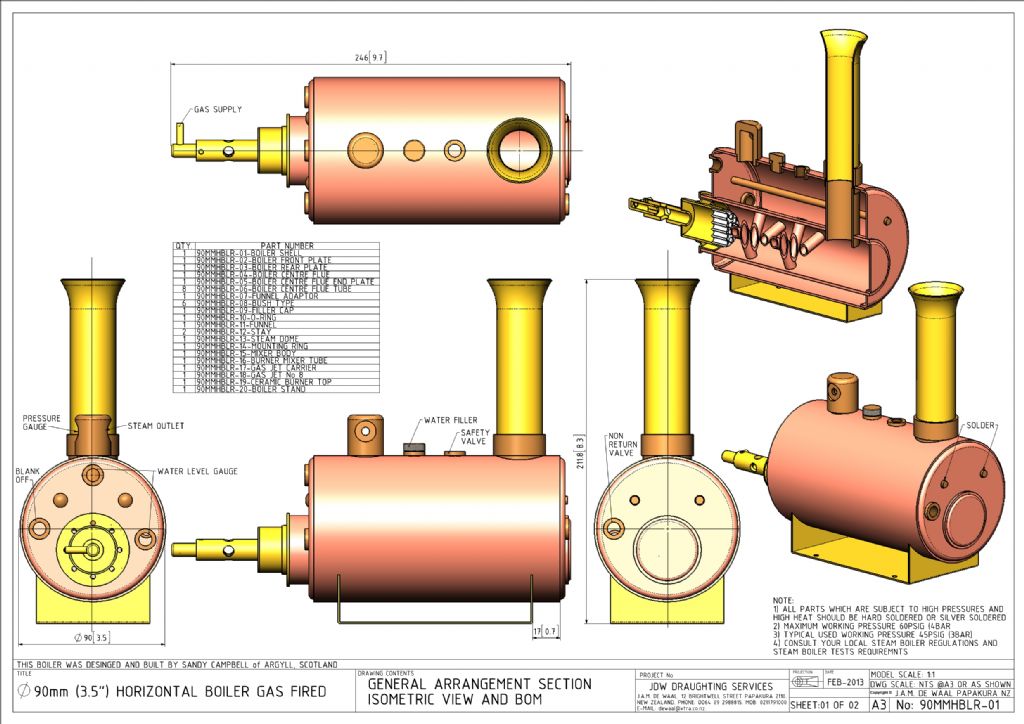Nicke gives a fair assessment of proportions: the flue is about or slightly above 1/3 the shell diameter, and is placed so its highest point is on a bit below the shell's centre-line.
The furnace section seems typically about 1/3 total length, and the flue is of constant diameter for its full length to the smokebox. That was always given an access hatch for cleaning.
The grate is slightly narrower than the flue's inner diameter so it rests below the flue axis, and the "ash-pit" segment is closed by a door containing a damper.
The firebox, as such, is therefore rather like the "marine" type used on some narrow-gauge locos – I think the 'Polly' range exemplifies them although those boilers have firetubes, not a single flue.
Taking up Nick's point about coal-fired O-gauge locomotives, I would endeavour to find how their boilers are arranged, since on the face of it your proposal is for a boiler somewhat larger than those. They evidently work, but I don't know their secret!
If you use a hidden fan as Mark suggests, I would think it better to make it induce the draught in the chimney by driving air through a simple ejector in the chimney base, rather than pulling the hot gases through the fan.
Cornish boiler-houses generally had the chimney right up against the house wall, and the chimneys I've seen didn't seem to have the pedestal common to many factory chimneys. The fan etc, could be concealed in an adjoining coal store, with a discreet tube within the model's base to feed the ejector.
'
An interesting challenge! Do keep us posted!
.
As an aside, some may recollect Ron Jarvis' magnificent models of particularly significant, early steam-engines, including Newcomen's Atmospheric Engine. This, complete with all-correct lead pipes and square nuts, works as it should (I wonder where his models are now – Ron died quite some years ago), but for the boiler. About the shape and size of an orange, and with an orange-peel finish to simulate the original's hand-forged wrought-iron plates, it uses an electric heater to produce steam at the prototype's not-so-strong 2psi. Ron used to joke to us, his fellow society members, that the heater's electronic controller made this the only 18C engine with 20C microprocessor control!
vic francis.





